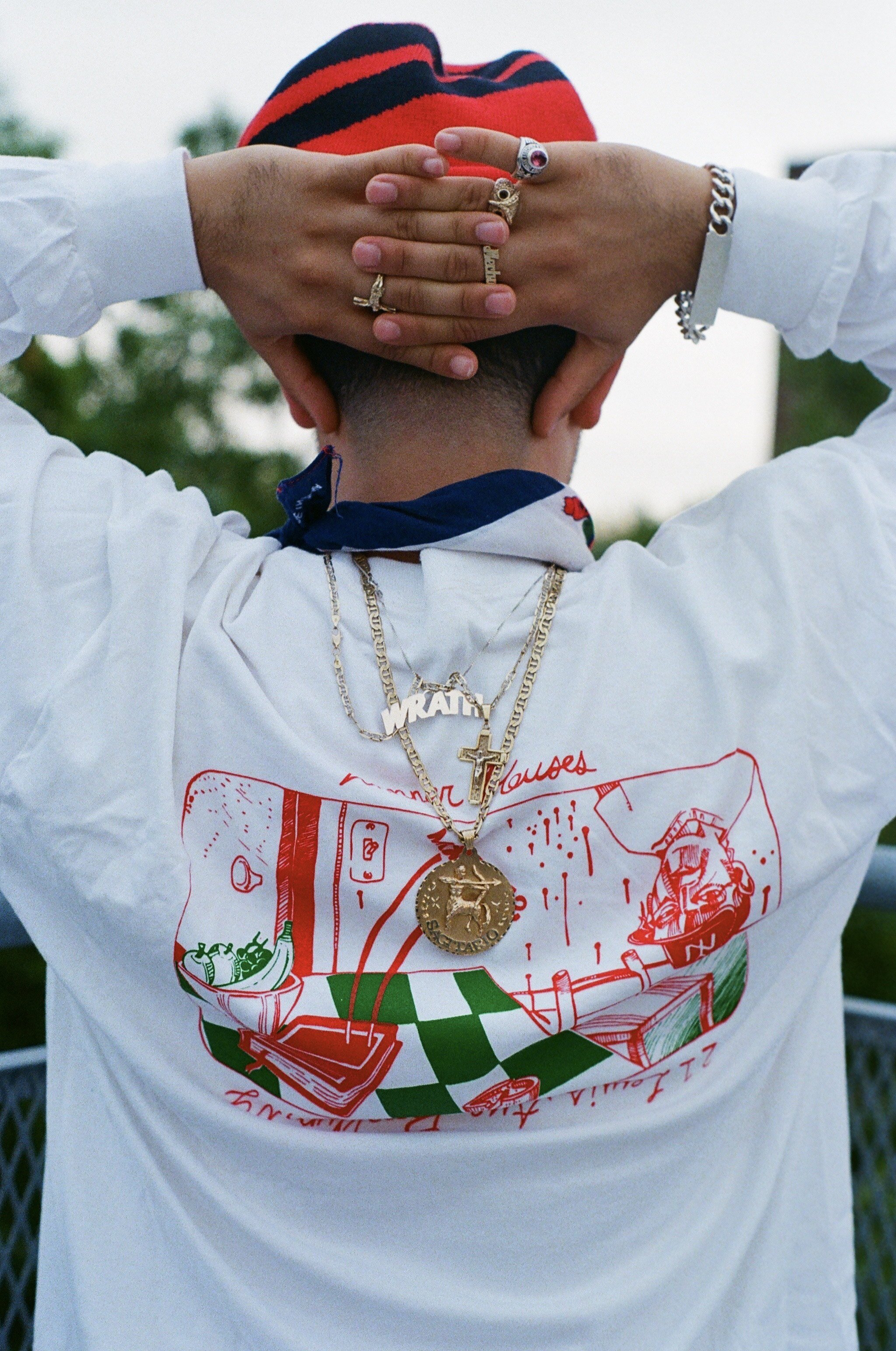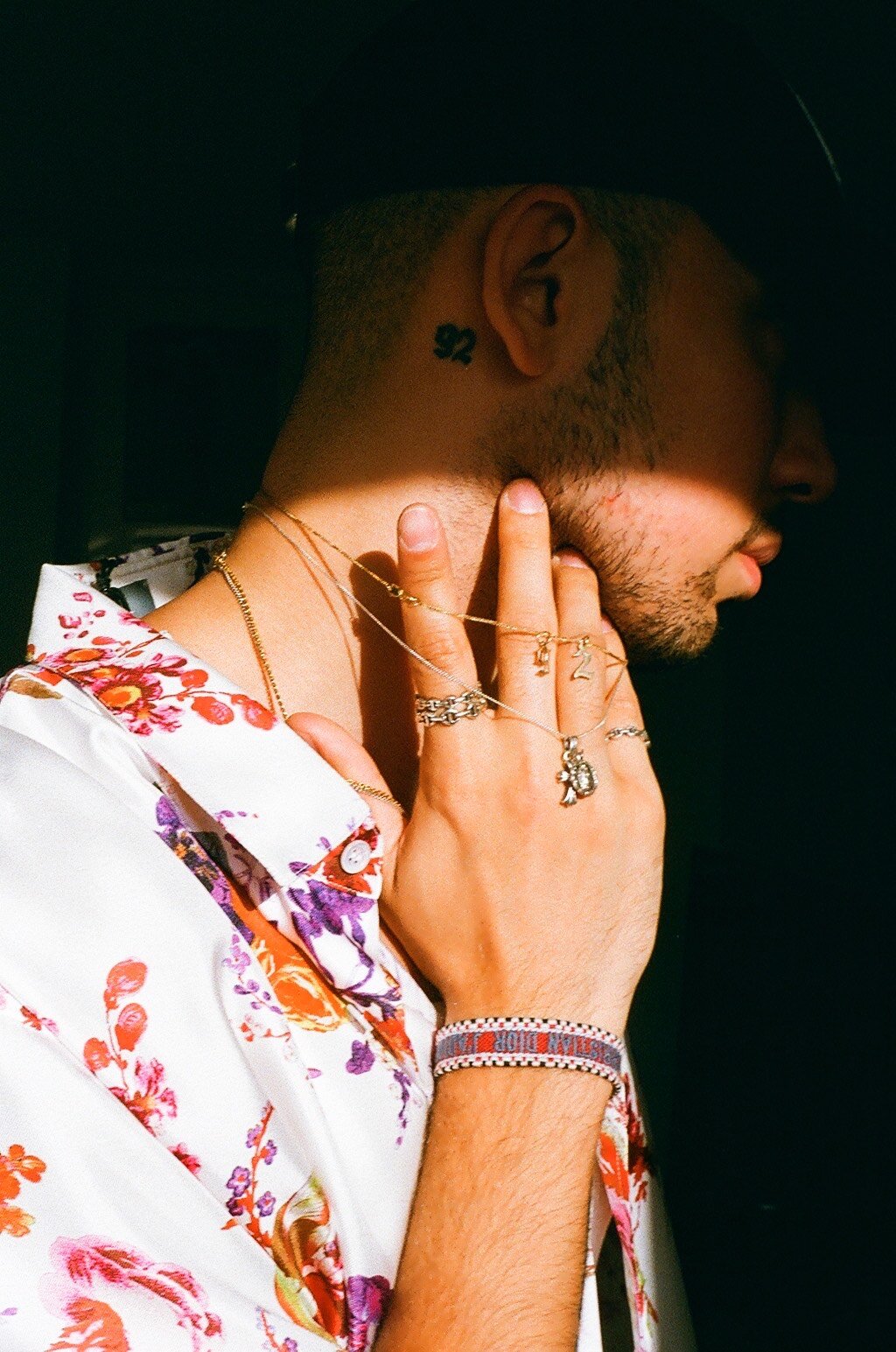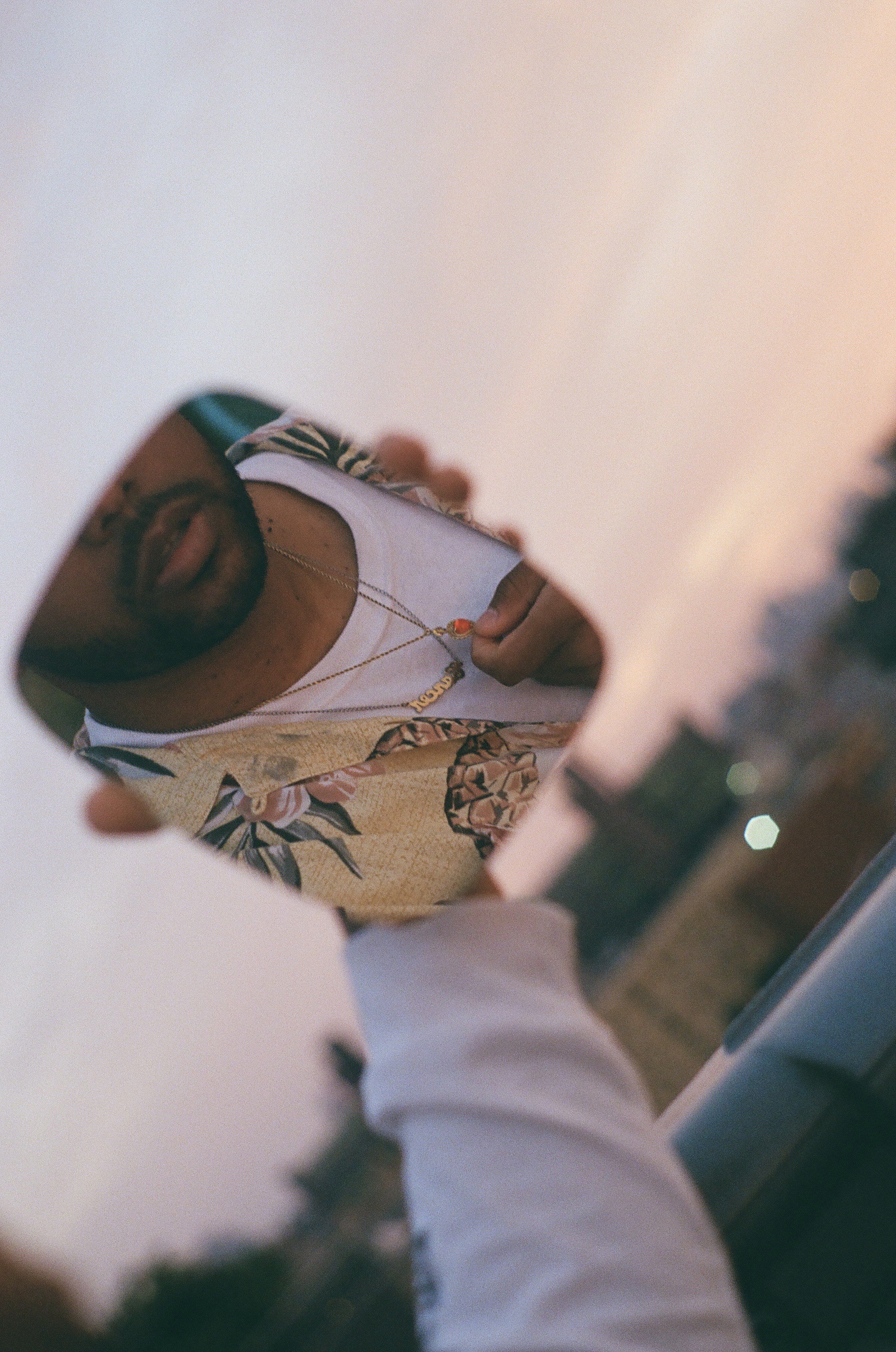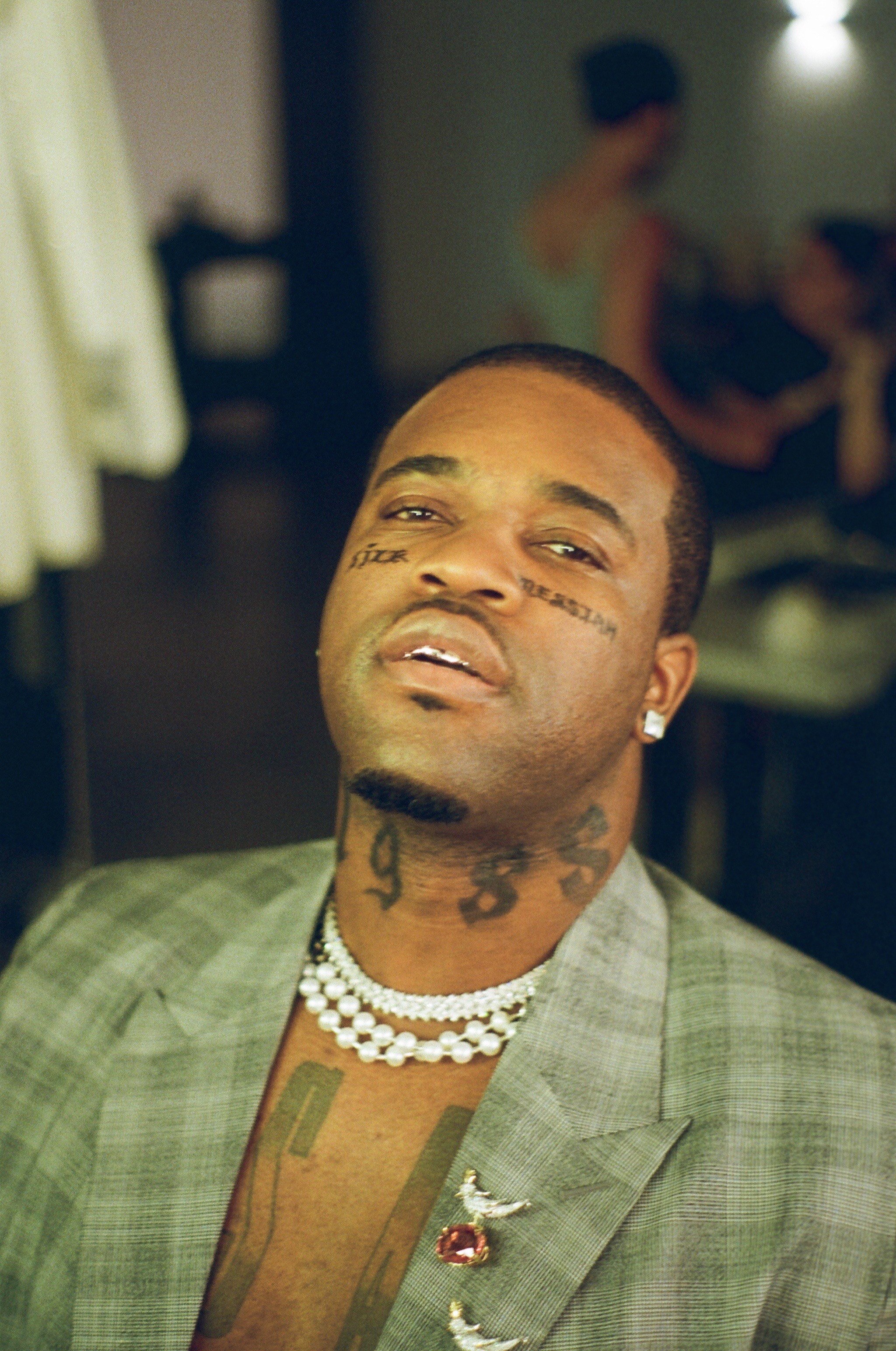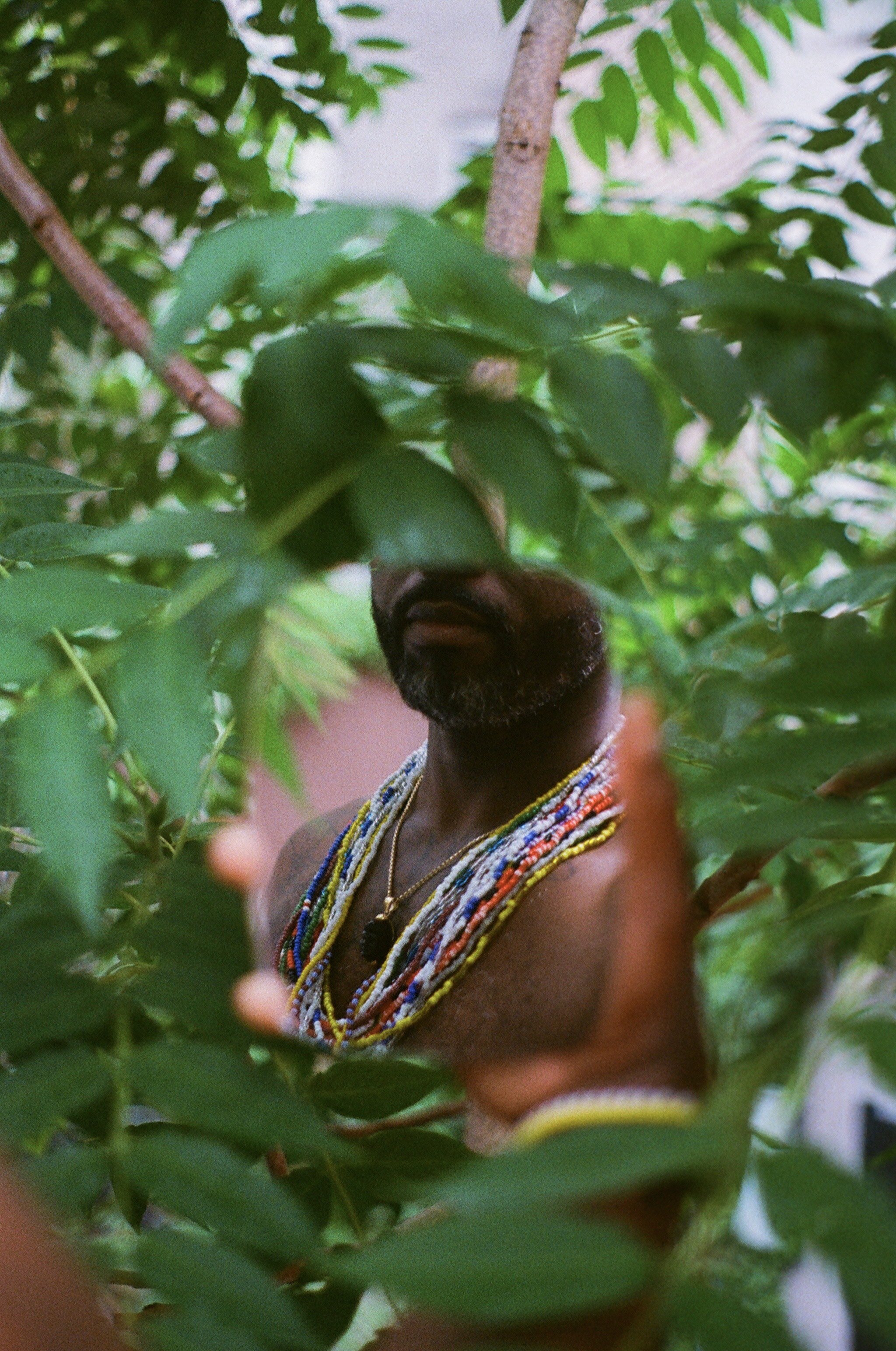ALL GOLD EVERYTHING
Get to know 27 year old Ramshah Kanwal a filmmaker and photographer based out of Brooklyn NY; who recently put out a photography project using 33mm film named LINK that explores identity through gold.
Photo by Ramshah Kanwal of her as a child
I am no stranger to the art of giving and receiving gold. As Pakistani children, we are given a gold chain with an “Allah” pendent on it before we can walk, our mothers have special pieces waiting for holidays and we are taught that the one thing there is true value in, is gold.
Since childhood, I’ve gone to my fair share of traditional Pakistani weddings. The bride wears red and is draped in very heavy gold from head to toe- I never understood why they were gifted such big pieces of jewelry that were kept away in a safe and not functional jewelry they could wear every day. I later learned that this had nothing to do with what we call clout or the concept of “drip or drown”.
On their wedding day, the couple is given gold from their in-laws- many parents save for this even in their child’s life. These gold items are of extreme value and as time progresses, their value goes up. If the couple ever sees financial hardship in the future, they can sell the wedding gold for money in a time of need.
Growing up in a culture where gold meant different things allowed me to form a complex relationship with it. Each time I brought home sneakers, my mom would do (incorrect) math and conclude that instead of buying sneakers, I could’ve saved up and invested it in a piece of gold jewelry.... I’d think to myself “but mom, these are white AF 1s and buying them is my civic duty as a New Yorker”.
As a bushy eyebrowed preteen, I’d walk around the house secretly wearing my brother’s herringbone chain and often pleaded with my mom to let me wear her own rope chain. She refused every time (except on birthdays) because my late grandmother (her mother in law) gifted her that chain and it was special to her. I decided I wanted a special chain, and because I was a NY kid down to my bones, this chain had to be a name plate. So I called my uncle in Pakistan and asked if he could send me a chain that had my name on it. Weeks later, I was gifted with a heavy gold chain that said “Rimsha,” the name only my family calls me.
Although this was the most valuable item I had— I remember feeling a sense of disappointment. I was Rimsha, but this isn’t the name everyone called me. I was 11 years old and still growing into my identity as a Pakistani-American and the last thing I wanted was one more thing that made me different from others. Nevertheless, I decided to wear my chain to school, a place where people knew me as “Ramshah.”
I forgot that an NYC public school is a battleground, and for the first few days that I wore my chain there was a lot of speculation from classmates. I remember that in the midst of science class, my friend turned to me and said, “they spelled your name wrong on your chain.”
I was exhausted by having to explain the other part of me and lacked the courage that allowed me to take ownership of my tri-lingual identity— I just wanted exist in the proximity of being as American as possible. I stored my chain back in it’s case.
Late in 2018, someone asked me the proper way to pronounce my name. I explained that although my name is Ramshah, my family actually calls me Rimsha, and began talking about the chain I got over a decade ago from my uncle. I realized that I had to make peace with my identity, before I could share all of it with others. I forgave myself for burying such an important part of myself all those years ago because I wasn’t ready to answer complex questions about identity as a 7th grader. I didn’t want to have to explain how or why the most special people in my life call me Rimsha. But I am ready now.
Gradually, this chain became vital for me to understanding my identity, and wearing it became an act of rebellion for my 11-year-old self, who thought I’d needed to be as American as possible to live a life without questions. This led me to think about the different ways gold has meaning in my life as well as the life of my friends. I decided I wanted to explore the stories behind the gold jewelry my friends wear — whether it be a nameplate they bought, a chain given to them by someone special or a piece that held a memory of someone they lost. Project LINK explored some of this through photography, and through it I learned that wearing these chains we mostly want to honor ourselves, remember an event that happened in our lives or simply express ourselves to the rest of the world.
Below you’ll find the my series, I hope you enjoy it as much as I enjoyed photographing them. If you want to check out more of my work click here, or if you simply want to say hello follow me on instagram.




